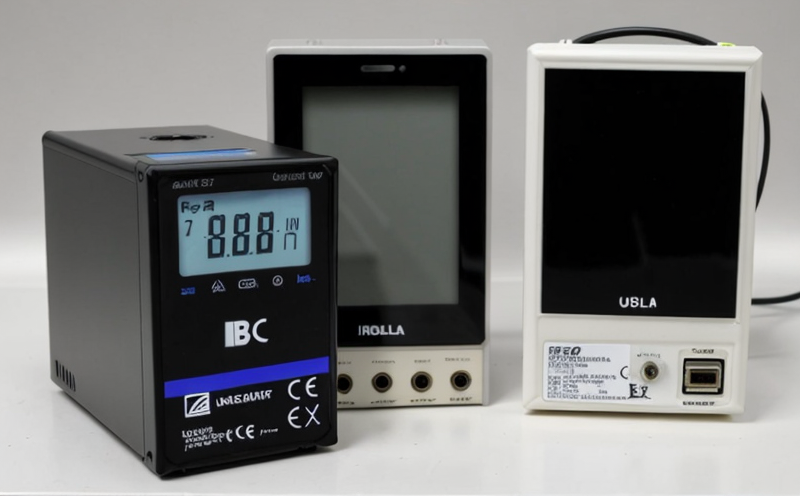IEC 61960 Consumer Electronics Secondary Lithium Cell Performance Testing
The International Electrotechnical Commission (IEC) standard IEC 61960 specifies the performance requirements and test methods for secondary lithium cells used in consumer electronics. This comprehensive testing ensures that these batteries meet stringent safety, reliability, and performance criteria necessary for consumer devices such as laptops, smartphones, tablets, and wearables.
The standard is essential for manufacturers and suppliers who need to demonstrate compliance with international regulations aimed at protecting end-users while maintaining the integrity of their products in a competitive market. By adhering to IEC 61960, companies can ensure that their secondary lithium cells are safe, reliable, and perform optimally under various conditions.
The testing protocol encompasses a range of critical parameters including internal resistance, charge retention, capacity, cycle life, and safety tests such as overcharge, overdischarge, short circuit, and thermal abuse. Each test is designed to simulate real-world usage scenarios that the batteries might encounter during their lifecycle.
Internal Resistance: This parameter measures how efficiently a cell can deliver current under load conditions. High internal resistance can lead to poor performance in high-drain devices like gaming consoles or drones.
Charge Retention: Charge retention tests assess how well a battery retains its charge over time, especially important for portable electronics that are used intermittently.
Capacity and Cycle Life: These tests evaluate the total amount of energy a battery can deliver during its lifetime. A high cycle life indicates better durability and longevity, which is crucial for devices that users frequently recharge.
Safety Tests: Overcharge, overdischarge, short circuit, and thermal abuse tests are conducted to ensure that the batteries do not pose risks in extreme conditions or improper usage scenarios.
The testing process involves precise specimen preparation, using the appropriate battery types specified by IEC 61960. The use of high-precision instrumentation ensures accurate data collection for each test parameter. Reporting follows strict guidelines set forth by the standard to provide clear insights into the performance and safety margins of the tested batteries.
For quality managers and compliance officers, ensuring adherence to IEC 61960 is critical for maintaining a positive brand image and avoiding costly recalls or product bans in the market. R&D engineers benefit from this testing by gaining deeper insights into how their designs perform under real-world conditions, allowing for iterative improvements.
IEC 61960 provides a structured approach to battery testing that is recognized globally, ensuring consistency across different markets and regulatory environments. This standard is particularly valuable in the consumer electronics sector where safety, reliability, and performance are paramount.
Applied Standards
| Standard Number | Title of Standard |
|---|---|
| IEC 61960 | Battery chargers and battery pack safety requirements for portable electronic equipment |
The IEC 61960 standard is the cornerstone of this testing service. It mandates specific procedures and parameters that must be adhered to during performance tests, ensuring consistency and reliability across different laboratories.
IEC 61960 covers a wide array of topics related to secondary lithium cells used in consumer electronics. The standard is divided into several sections, each focusing on different aspects of battery performance and safety:
- Basic Requirements: Ensures that the batteries meet fundamental requirements such as dimensional stability, mechanical integrity, and electrical characteristics.
- Performance Tests: Includes tests for internal resistance, charge retention, capacity, and cycle life to assess battery efficiency and longevity.
- Safety Tests: Covers overcharge, overdischarge, short circuit, and thermal abuse tests to ensure that the batteries are safe in various operating conditions.
By adhering to these standards, laboratories can provide accurate and reliable test results that meet international regulatory requirements. This ensures that manufacturers can confidently market their products globally without facing compliance issues or safety concerns.
Why Choose This Test
- Compliance with International Standards: Ensures adherence to IEC 61960, which is recognized worldwide and widely adopted by regulatory bodies.
- Enhanced Safety: Provides detailed insights into the safety margins of batteries under extreme conditions.
- Performance Optimization: Offers a deeper understanding of battery performance in real-world scenarios, aiding R&D teams in optimizing designs.
- Global Market Access: Meets stringent regulatory requirements across different markets and regions.
- Customer Satisfaction: Ensures that products meet high quality standards, leading to increased customer trust and satisfaction.
- Risk Mitigation: Minimizes the risk of product recalls or bans due to safety or performance issues.
- Competitive Edge: Differentiates products in a crowded market by demonstrating superior battery performance and safety.
- Sustainability: Encourages the use of batteries that are reliable, safe, and environmentally friendly.
The IEC 61960 test is indispensable for quality managers, compliance officers, R&D engineers, and procurement teams looking to ensure high standards in their products. By choosing this service, businesses can gain a competitive advantage by demonstrating commitment to safety, reliability, and performance.
Competitive Advantage and Market Impact
The IEC 61960 test plays a pivotal role in shaping the landscape of consumer electronics. By ensuring that batteries meet stringent performance and safety criteria, this service helps businesses to:
- Stand Out in Competitive Markets: Demonstrates excellence in product quality and reliability.
- Increase Market Share: Attracts more customers by offering safer and more efficient products.
- Build Brand Reputation: Enhances brand reputation through consistent compliance with international standards.
- Attract Investors: Demonstrates a commitment to quality, which is attractive for potential investors.
- Comply with Regulatory Requirements: Ensures that products meet all necessary regulatory requirements, avoiding costly non-compliance issues.
- Sustain Long-term Relationships: Builds long-lasting relationships with customers by consistently delivering high-quality products.
In a market where safety and performance are paramount, the IEC 61960 test is not just a compliance requirement but a strategic asset. It helps businesses to navigate regulatory landscapes confidently while ensuring that their products meet or exceed global standards.





